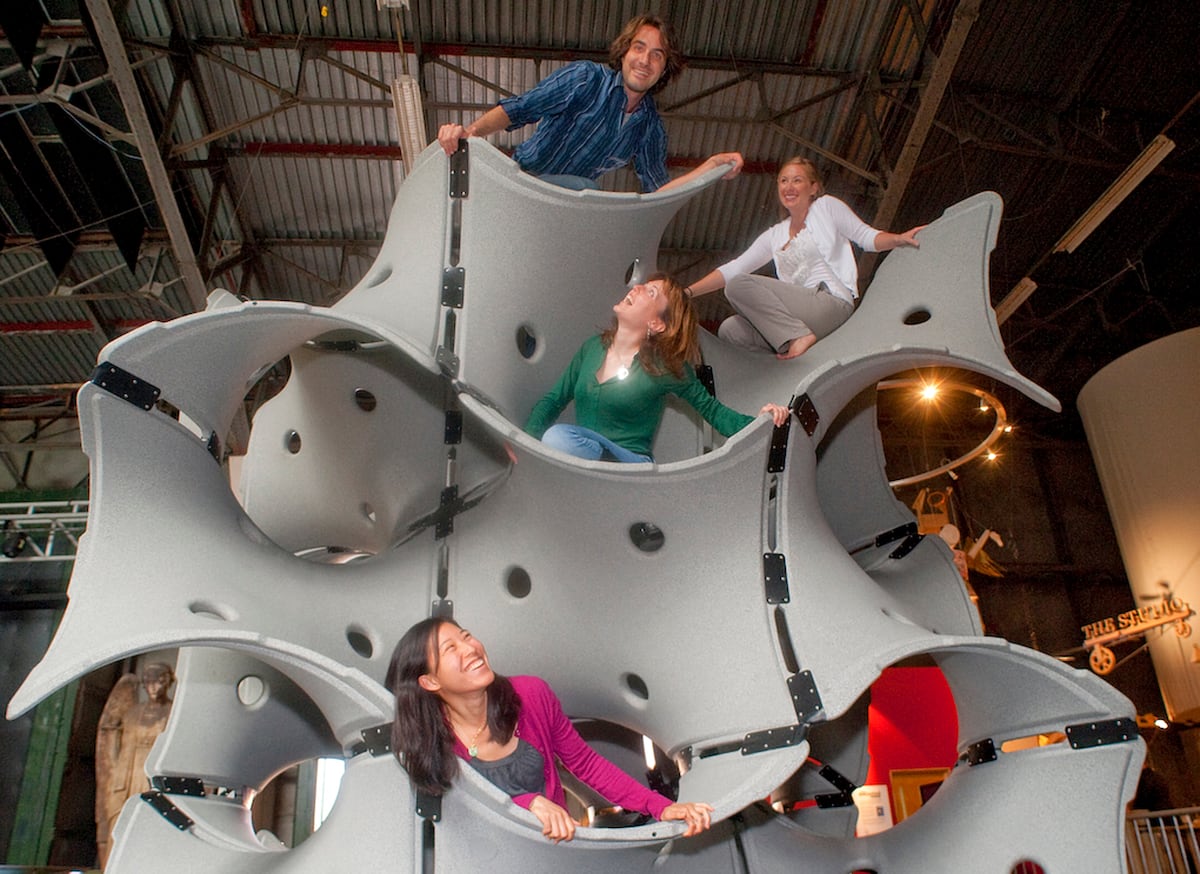
"Gyroids are minimal surfaces characterized by zero mean curvature, making them unique in geometry and particularly complex to visualize due to the absence of straight lines."
"3D printing has revolutionized the manufacturing process of gyroids, enabling their creation for applications in diverse fields such as architecture, healthcare, and art."
"Gyroids exemplify triply periodic structures that can be replicated in three spatial dimensions, offering potential for innovative design applications due to their strong yet lightweight nature."
"The development of gyroids stems from a 1970 concept by Alan Schoen, which aligned with NASA's quest for lightweight and robust structures for aircraft."
In the 1960s, NASA sought lightweight and robust structural designs for aircraft, leading to the emergence of the gyroid shape developed by Alan Schoen in 1970. Despite its potential to meet space agency requirements, complex manufacturing processes hindered its production until recent advancements in 3D printing technology. Gyroids are defined by their minimal surface properties with zero mean curvature and are classified as triply periodic structures. Their reproduction in three spatial dimensions provides versatility for use in acoustic panels, medical implants, and artistic endeavors, marking a significant innovation in geometric applications.
Read at english.elpais.com
Unable to calculate read time
Collection
[
|
...
]